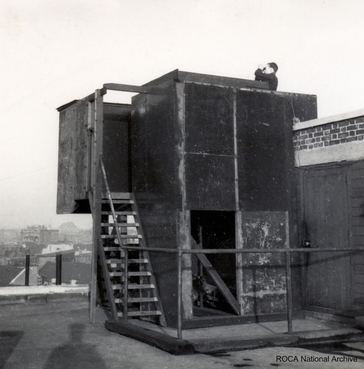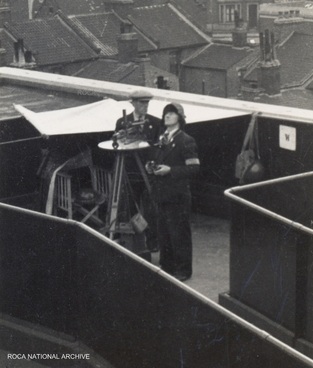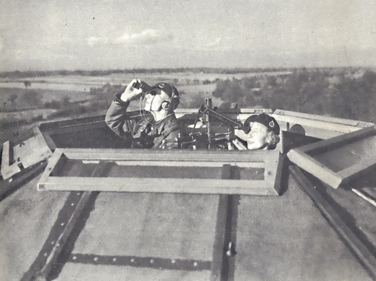AIRCRAFT OBSERVATION POST
Early aircraft observation posts during WW2 were simple constructions generally consisting merely of emplacements surrounded by sand-bags or wooden huts. These posts were generally built to an individual design by the local observers albeit with support from the General Headquarters or Air Ministry. Wooden huts were also erected and were built locally to a set of plans and in materials specified by the Observer Corps’ HQ after the Munich Crisis. These became known as “Standard Pattern Huts”. Although such posts were cheap and quick to erect, the protection that such posts offered from the elements and attack was minimal.
Two views of Stratford Observation Post in East London. The images show the simple nature of the post construction to fit with the strategic location. Weather protection was generally limited as may be seen on the right-most picture.
An alternative form of observer post utilising glass panels to provide (minimal) weather protection.
Image Sources: ROCA National Archive


